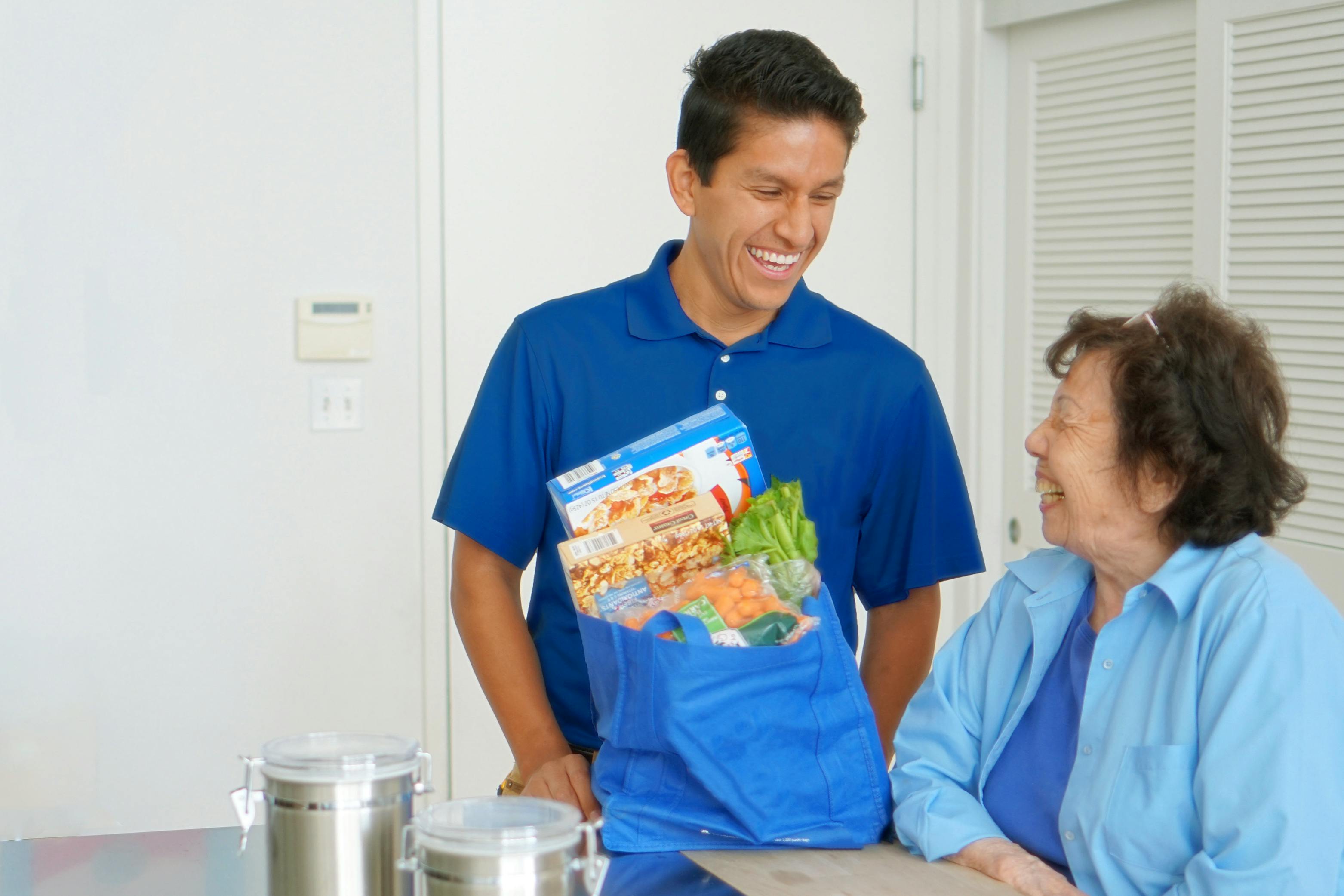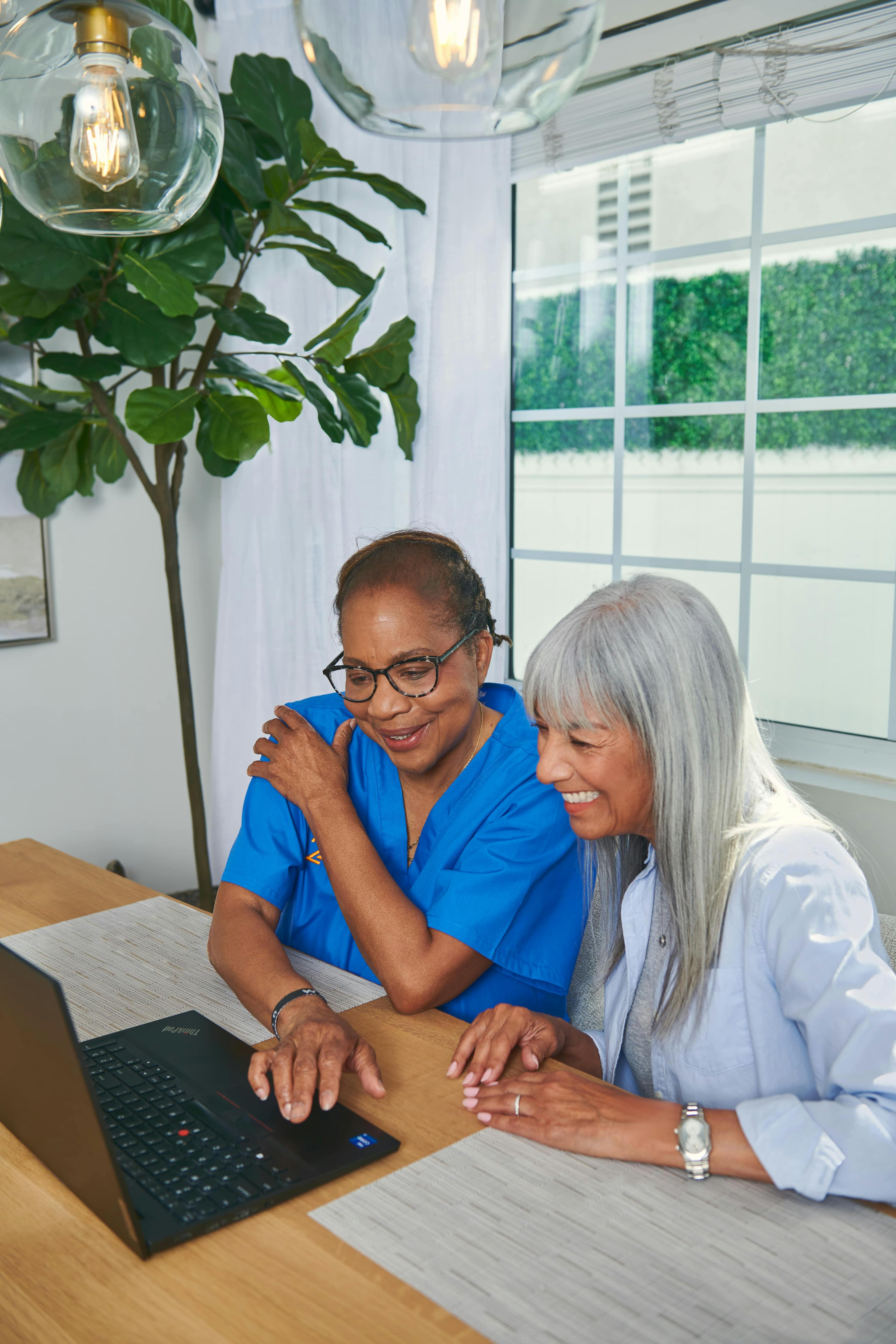Understanding Coronavirus and How to Limit It’s Spread

COVID-19 has taken over our lives, changing how we work, how we shop, how we learn, how we socialize, and how we live.
If you or your loved one require in-home care during this time, it’s important to know and understand the virus and how your caregivers are responding to the COVID-19 crisis. High-quality, reliable, compassionate in-home care helps limit exposure to the virus while providing much-needed support during an already challenging time.
How Does the Virus Work?
COVID-19 is a member of the coronavirus family and was first seen in humans in December 2019 in Wuhan, China. COVID-19 enters the body through the eyes, nose, and mouth and heads for the lungs, the spleen, and the intestines, where it attaches itself to the host’s previously healthy cells and gives its toxic instruction, “replicate,” and quickly begins to multiply and take over. As soon as the foreign invader is detected, the host’s immune system starts sending immune cells and antibodies to the infected area. In most cases, the immune system can take control of the battlefield, destroy the viral enemy, and clean up the mess left behind. But in some cases, the virus and the secondary infections prove to be too much for the immune system to handle.
What Are the Effects of COVID-19 on the Body?
First, it’s very important to understand that COVID-19 is a new virus. Researchers are just beginning to understand how it affects the human body and there is much yet to learn. That said, here’s what we know to date:
- While COVID-19 can head to the lungs, spleen, and intestines, it seems to have its greatest affinity for the lungs, which is why it’s been classified as a respiratory disease. In the first stage, the virus attacks two kinds of cells in the lungs, the mucus-producing cells, and the ciliated cells.
- In the second stage, the immune system senses the presence of the virus and sends immune cells to the lungs to remove the damaged cells and repair the damaged tissue. For most patients, this is the end of the COVID-19 story; healthy immune systems use a carefully regulated process to keep the damage contained and get things back to working order quickly. However, hyperactive immune systems can do more harm than good and immune systems that are compromised in any way are unable to keep up with the rapidly replicating virus.
- In these cases, patients progress to stage three. This stage begins with increasing lung damage, sometimes permanent, that resembles a honeycomb with holes peppering the lung tissue. These “holes” make the lungs stiff and unable to support adequate gas exchange between the body and the atmosphere. Inflammation is also present, causing lung alveoli to be leaky and fill the lungs with fluid. Stiff, leaky lungs are unable to carry out oxygenation, resulting in pneumonia and severe shortness of breath.
- COVID-19 is primarily transmitted from person to person via respiratory droplets produced during coughing. The first sign of infection is a fever and a cough. Symptoms may worsen to become pneumonia.
- While COVID-10 has a passion for the lungs, some of the virus can also make its way to the gut. The novel coronavirus binds to cells on the gut epithelium causing damage and diarrhea. A limited number of studies have detected the virus in stool samples of infected patients, suggesting the possibility of fecal-oral transmission.
- In addition to the lungs and intestines, COVID-19 can also affect the blood, liver, and kidneys. More research is underway to understand this impact more fully.
- The incubation period for the virus is still uncertain, but a March 2020 article in the Annals of Internal Medicine suggests that the virus can spread before the onset of symptoms and up to two weeks after clinical recovery.
Who is at Higher Risk of Death?
The complete clinical understanding of COVID-19 is unknown. The illness runs the full gamut from mild (no symptoms) to severe, including infection that results in death. According to the CDC, most available information suggests that approximately 16% of cases involve serious illness. Older patients and patients of all ages with existing medical conditions are at high risk for serious illness. One report found that 80% of COVID-19 deaths were in patients 65 years of age and older, with the highest death rates occurring in people over 85.
What Are Ways to Limit the Spread of the Virus?
Stop the Spread.
Everyone can do their part to stop COVID-19. The CDC recommends the following to slow the spread of the virus:
- Make social distancing your new way of life.
- Recover at home. If you are sick with COVID-19 and your symptoms are mild, recover at home. There’s no cure for COVID-19, but mild cases do not require specialized care. Follow CDC guidelines for isolating yourself to prevent the spread of the virus.
- Quarantine yourself. If you’ve traveled to an affected area or you know you’ve been exposed to the virus, you are required to comply with quarantine restrictions.
Keep Things Clean
The CDC provides excellent recommendations for keeping things clean.
- Wash your hands. Use soap and wash for at least 20 seconds.
- Clean and disinfect regularly touched surfaces with soap, water, and proven disinfection products. For a complete list of EPA-approved household disinfection products, click here.
What if Someone in Your Home is Sick?
Family members and caregivers caring for COVID-19 patients need to take precautions to avoid getting or spreading the virus.
- Follow these instructions from the CDC to keep your home clean.
- Monitor symptoms carefully for signs of worsening illness.
- Treat symptoms to alleviate discomfort and promote recovery.
- Keep the patient isolated as much as possible and use gloves and facemasks as required.
- Watch for indications that home isolation can end. Consult the CDC guidelines to determine when it’s safe to go out again.
Trust 24 Hour Home Care
The caregivers at 24 Hour Home Care are an excellent resource for you and your family during this difficult time. Home is the safest place for your loved one; our caregivers make it easier for high-risk individuals to avoid exposure to COVID-19. We’re staying on top of the situation and taking every precaution to ensure that our caregivers and our clients stay safe.
